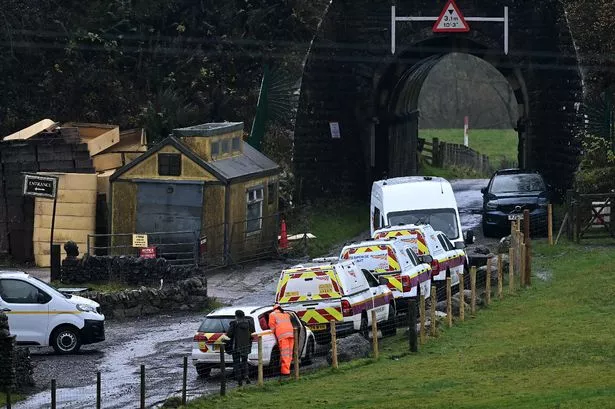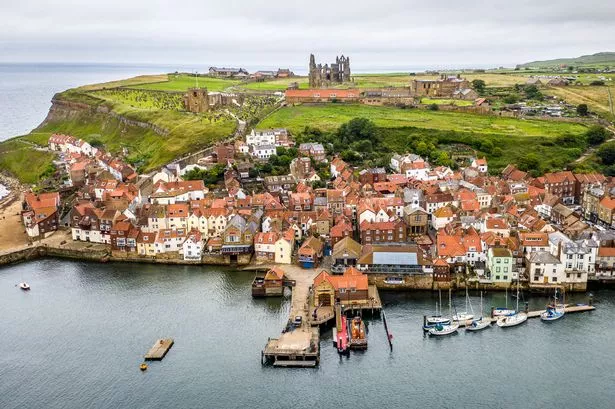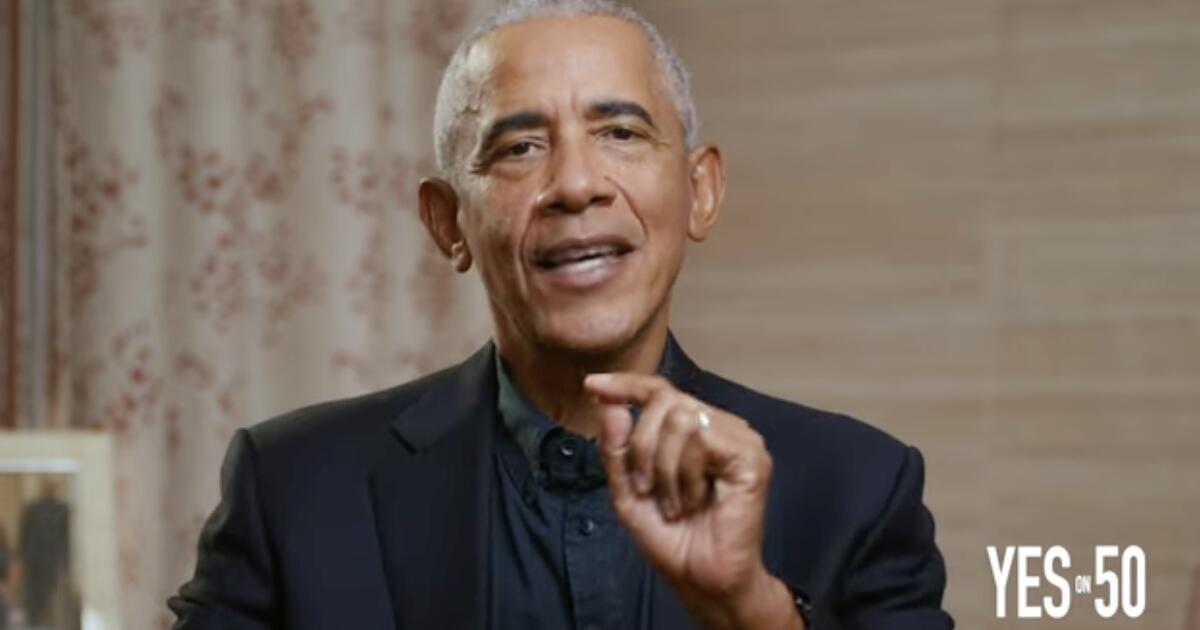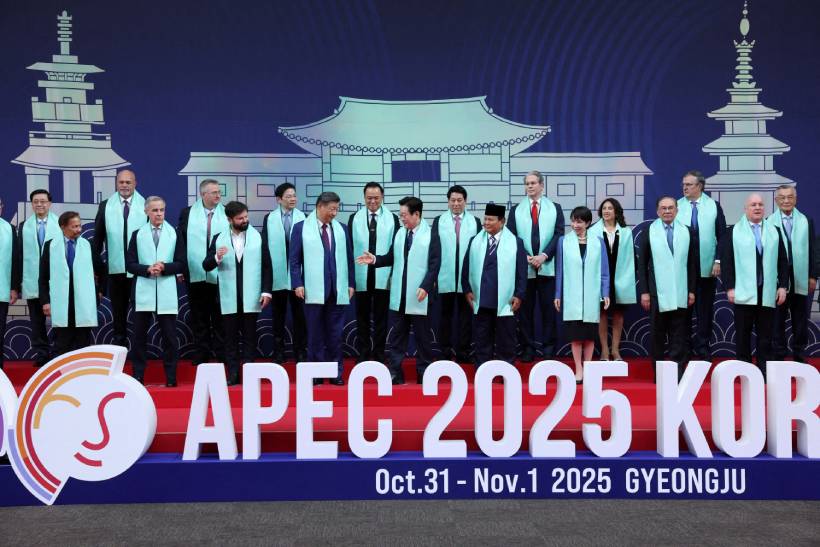Urgent train travel warning as police declare ‘major incident’ days after attack
Commuters can expect travel chaos in the days ahead after the derailment of train on a major line, with the train operator issuing an urgent warning for anyone travelling by rail this week
Less than 48 hours after passengers were stabbed in a frenzied attack on a train near Huntingdon, Cambridge, police have declared a second ‘major incident’.
Chaos has ensued after an Avanti West Coast train derailed near the Cumbrian village of Shap in what was declared a “major incident”.
Those onboard feared the worst after the train hit mud left by a landslide at around 90mph, with some alarmed passengers even concerned that the “loud bang” meant that another knife attack was underway, like the one that unfolded in Cambridgeshire on Saturday night (November 1).
The incident occurred at 6.10 am this morning (November 3), and all passengers were safely removed from the train by emergency crews. Meanwhile, photographs show a train carriage in a crushed state, with pipework and wires exposed.
Four individuals suffered minor injuries following the derailment near Shap in Cumbria, North West Ambulance Service confirmed, but thankfully, after assessing 87 people, ambulance workers determined that “no one required further hospital treatment”.
However, while the major incident status has since been “stood down”, an operation remains in place as crews work to clear the scene, and Avanti West Coast have now warned commuters to expect significant disruption to its network in the days to come.
READ MORE: Cumbria train derailment LIVE: Emergency services rush to scene amid ‘do not travel’ alert
Warning commuters not to travel north of Preston, an Avanti West Coast spokesperson said: “At 06.10hrs today, 3 November, the 0428 Avanti West Coast service from Glasgow to Euston was reported to have derailed at Shap in Cumbria. Our priority is the well-being of everyone who was on board and getting them safely off the train. We are assisting emergency services who are on the scene.
“As a result, all lines are blocked north of Preston. Please do not attempt to travel north of Preston today. We’ll provide further information in due course, but it is likely there will be significant disruption to our network for a number of days.”
With the line from Glasgow to London Euston being the main route for services operating in the west of the UK, it’s expected that thousands of passengers will be impacted by this ongoing disruption.
Echoing Avanti West Coast’s warning not to travel north of Preston, National Rail stated: “Major disruption between Carlisle and Preston expected until the end of the day. A derailed train between Penrith and Oxenholme means all lines are blocked. Trains running between Carlisle and Preston may be delayed by up to 120 minutes or cancelled.”
Meanwhile, National Rail has also clarified that rail replacement buses are no longer in operation between Carlisle and Preston, “due to a limited supply of coaches”, while it’s anticipated that “replacement vehicles may be busier than usual”. The train company advised: “You may be entitled to compensation if you experience a delay in completing your journey today. Please keep your train ticket and make a note of your journey, as both will be required to support any claim.”
It was previously reported that some 130 passengers have been taken to the nearby Shap Wells Hotel, with hotel director Shabeeh Hassan, revealing that the commuters arrived from 07:30am and seemed to have no injuries. He did however remark that some of the passengers were in shock, telling BBC Radio Cumbria: “I’m doing as much as I can just to make them comfortable.”
It comes after passengers on the 6.25pm LNER train from Doncaster to King’s Cross on Saturday night ended up running for their lives down the carriages as one of the biggest mass stabbings in British history unfolded.
A total of 10 people – including a man who was allegedly stabbed in the head while protecting a young girl – were rushed to hospital after the quick-thinking driver made an unscheduled stop at Huntingdon in Cambridgeshire, allowing passengers to flee down the platform.
Anthony Williams, 32, of Langford Road, Peterborough, was charged with 10 counts of attempted murder, one count of Actual Bodily Harm and one count of possession of bladed article.
Do you have a story to share? Email me at [email protected]
READ MORE: Cumbria train derailment: Major update as company warns ‘do not travel’
‘Terrific’ crime drama with ‘outstanding’ cast is now streaming
The five-part series, penned by a Booker Prize-winning author, has been praised by critics and viewers alike and boasts a smashing 100% rating.
A five-part British crime noir series is earning high praise and, fortunately, it’s available to stream for free on Channel 4.
The limited series Get Millie Black was crafted for television with a screenplay penned by Booker Prize-winning author Marlon James, who wrote A Brief History of Seven Killings.
This crime thriller marks Marlon’s screenwriting debut and first premiered on HBO in the United States on November 25, 2024. It then made its UK premiere on Channel 4 on March 5, 2025.
Get Millie Black has been steered by Tanya Hamilton – the show’s lead director – while Annetta Laufer directed two episodes and Jean Luc Herbulot directed one. The series was penned by writers Theresa Ikoko and Lydia Adetunji.
The plot revolves around the unparalleled Millie-Jean Black, a Jamaican-born police detective who is forced to leave Scotland Yard and her troubled life in London and return home to Jamaica, where she joins the Jamaican Police Force.
Once back in Kingston, Millie and her partner Curtis start investigating a missing persons case which intersects with another — bringing Scotland Yard detective Luke Holborn to Millie’s doorstep. The show grapples with complex themes and delves into the painful and troubled legacy of slavery, racism, classism, sexuality, and generational cycles of trauma in the post-colonial Jamaican and British landscape.
Get Millie Black features the brilliant Tamara Lawrance in the starring role, alongside Joe Dempsie, Anjli Mohindra, Gershwyn Eustache Jnr, Chyna McQueen, Nestor Aaron Absera, and Peter John Thwaites.
The five-part mini series is available to watch without charge on Channel 4, with episodes running for an hour on average, reports the Express.
Discussing Get Millie Black and how Millie’s character came to life, Marlon revealed: “My mother was one of the first policewomen in Jamaica to make detective. Storytelling has always struck me first and foremost as a mystery to be solved – which I’m sure I got from her. Millie, from the second she appeared in my imagination, was a brilliant, mercurial, hilarious, unpredictable force of nature; someone who was always there, just waiting for her story to be told. I didn’t create her, I found her.”
Boasting a perfect 100% score on review aggregator site Rotten Tomatoes, Get Millie Black has received endless praise from critics, with one penning: “Get Millie Black lives and breathes. This might be a crime thriller, but it isn’t just a crime thriller. In the right hands, a crime thriller can contain multitudes.”
Meanwhile, another reviewer commented: “We got more story in the first 300 seconds than some series manage in an hour-long episode.”
In another glowing review of the series, a third critic remarked: “Crime shows, especially missing girl shows, often feel barren, or at least frozen in their Scandinavian snowscapes. Millie, on the other hand, feels abundant.”
And yet another impressed reviewer said: “Get Millie Black works well as a gory whodunit (with a genuinely unnerving twist at the centre). But the outstanding performances and the crimes in this setting make the show unique.”
Audience reviews follow in a similar vein, with one viewer writing: “All I’m going to say is wow. Watched all episodes in one sitting. Terrific detective series.”
While another audience member commented: “Worth a good watch if you’re interested in crime dramas. Especially if you want something original like this one, which takes place in Jamaica. Matter of fact, you don’t see many Jamaican movies/tv shows nowadays, and I’m glad that I’d checked it out. Great acting, good writing, and pacing that makes the series sort and simple since this is a limited series.”
Get Millie Black is available to stream for free on Channel 4.
European markets rise, oil prices jump on OPEC+ decision
European benchmarks began the week with gains. Oil and gold prices increased, but the euro weakened against the dollar. Sentiment was influenced by OPEC+’s decision to pause production hikes in the first quarter of next year, which led to a modest rise in oil prices as fears of oversupply eased. Gains were, however, mostly lost by late morning.
The international benchmark, Brent crude futures, traded at $64.76, while US West Texas Intermediate cost $60.92 a barrel.
Alongside pauses in the new year, OPEC+ countries agreed on Sunday to increase output by a small 137,000 barrels per day in December, maintaining the pace set for October and November.
Meanwhile, investors expect fresh Western sanctions on Russia, targeting Rosneft and Lukoil, to hinder the country’s ability to boost production further.
At the same time, major Western oil companies are benefitting from the disrupted supply of Russian refined fuels due to attacks and sanctions. Refining margins have risen substantially, giving the oil majors a boost. Both BP and Shell share prices were slightly up on Monday before noon in Europe.
“The decision by producers’ cartel OPEC+ to pause further output hikes at the start of next year, amid concerns about a glut of supply, helped give oil prices a lift and, in turn, boosted UK market heavyweights BP and Shell,” said AJ Bell investment director Russ Mould.
The movements also came as BP announced it had agreed to divest stakes in US shale assets to Sixth Street investment firm on Monday.
Winners in Europe
At 11:00 CET, the UK’s FTSE 100 was up by a few points. The DAX in Frankfurt was leading the gains, up 0.8% after an initial stutter. The CAC 40 in Paris started climbing, reaching gains of nearly 0.2%. The lift in France came despite national budget uncertainties and the release of negative PMI data, which showed that the country’s manufacturing sector was still contracting in October.
US futures were positive around the same time, rising between 0.1% and 0.5%.
Meanwhile, the earnings season continues. A number of European companies are reporting this week, including AstraZeneca, BP, BMW, and Commerzbank.
Ryanair opened the week by posting stronger-than-expected results for the first half of its financial year, spanning April to September. Revenues rose 13% to €9.82bn, as traffic grew 3% and fares increased by 13%. Over the same period, profit rose by 42% year-on-year to €2.54bn, driven by a strong Easter season.
The airline’s shares were up 2.90% in Dublin at around midday.
Looking ahead, Ryanair’s outspoken CEO Michael O’Leary criticised countries in Europe where airlines face high taxes, including environmental duties. In an interview with CNBC, he threatened to move capacity outside the UK should the new budget include such a levy.
“Ryanair is also one of several airline operators with an eagle eye on taxes and costs. It is no longer putting up with unfavourable tax systems, preferring to switch flights and routes to less punitive locations,” Mould commented.
In other markets, the euro weakened against the US dollar by more than 0.2%, hitting a rate of $1.1517 by 11:00 CET. At the same time, the Japanese yen and the British pound were also losing ground against the greenback, with the dollar trading at ¥154.15 and the pound costing $1.3136.
Gold traded just above $4,000, rising slightly by 0.3%.
To beat the election day rush: Here’s how to vote today in California
On Tuesday, voters will determine the fate of redistricting measure Proposition 50. But if you’re eager to vote in person, you don’t have to wait. You can easily pop into the polls a day early in many parts of California.
Where to vote in person on Monday
In Los Angeles County alone, there are 251 vote centers that will be open from 10 a.m. to 7 p.m. on Monday. (They’ll also be open again on Tuesday, election day, from 7 a.m. to 8 p.m.) At vote centers, you can vote in person, drop off your vote-by-mail ballot, or even register to vote and cast a same-day provisional ballot, which will be counted after officials verify the registration.
“Avoid the rush,” said Dean Logan, the L.A. County registrar-recorder/county clerk. “Make a plan to vote early.”
Also on Monday, San Diego County’s 68 vote centers are open from 8 a.m. to 5 p.m.; Orange County’s 65 vote centers from 8 a.m. to 8 p.m.; and Riverside County’s 55 vote centers and Ventura County’s nine vote centers between 9 a.m. and 5 p.m.
All of those vote centers also will be open on election day Tuesday from 7 a.m. to 8 p.m.
Other populous counties with a similar vote center system include the counties of Santa Clara, Alameda, Sacramento, Fresno, San Mateo, Stanislaus, Sonoma, Placer, Merced, Santa Cruz, Marin, Butte, Yolo, El Dorado, Madera, Kings, Napa and Humboldt.
Other counties have fewer in-person polling locations on Monday
San Bernardino County, however, only has six designated early voting poll stations. They’re open on Monday from 8 a.m. to 5 p.m., and also on election day from 7 a.m. to 8 p.m. Otherwise, San Bernardino County residents who want to vote in person on Tuesday can go to their assigned neighborhood polling location.
In Santa Barbara County, if you’ve lost or damaged a vote-by-mail ballot, you can request a replacement ballot through county’s elections offices in Santa Barbara, Santa Maria or Lompoc. Otherwise, voters can cast ballots at their assigned neighborhood polls on Tuesday.
How to drop off your vote-by-mail ballot
All Californian registered voters were mailed a vote-by-mail ballot. There are various ways to drop it off — through the mail, or through a county ballot drop box or polling place.
Ballot drop box or polling place
Be sure to get your ballot into a secured drop box, or at a polling place, by 8 p.m. on Tuesday. You can look up locations of ballot drop-off boxes at the California secretary of state’s or your county registrar of voters’ website (here are the links for Los Angeles, San Diego, Orange, Riverside, San Bernardino, Ventura and Santa Barbara counties).
In L.A. County alone, there are 418 drop boxes.
You can drop off your ballot at any polling place or ballot drop box within California, according to the secretary of state’s office.
Mailing your ballot
You can also send your ballot through the U.S. Postal Service. No stamps are needed. Note that your ballot must be postmarked by Tuesday (and received by the county elections office within seven days).
But beware: Officials have warned that recent changes to the U.S. Postal Service earlier this year may result in later postmarks than you might expect.
In fact, state officials recently warned that, in large swaths of California — outside of the metros of Southern California, the San Francisco Bay Area and the Sacramento area — mail that is dropped off at a mailbox or a post office on election day may not be postmarked until a day later, on Wednesday. That would render the ballot ineligible to be counted.
As a result, some officials are recommending that — at this point — it’s better to deliver your vote-by-mail ballot through a secure drop box, a vote center or a neighborhood polling place, rather than through the Postal Service.
“If you can’t make it to a vote center, you can go to any post office and ask at the counter for a postmark on your ballot to ensure you get credit for mailing your ballot on time,” the office of Atty. Gen. Robert Bonta said.
Most common reasons vote-by-mail ballots don’t get counted
In the 2024 general election, 99% of vote-by-mail ballots were accepted. But that means about 122,000 of the ballots, out of 13.2 million returned, weren’t counted in California.
Here are the top reasons why:
• A non-matching signature: 71,381 ballots not counted.
• Ballot was not received in time: 33,016 ballots not counted.
• No voter signature: 13,356 ballots not counted.
If the voter didn’t sign their ballot, or the ballot’s signature is different from the one in the voter’s record, election officials are required to reach out to the voter to resolve the missing or mismatched signature.
Other reasons included the voter having already voted, the voter forgetting to put the ballot in their envelope, or returning multiple ballots in a single envelope.
World’s longest 18.5-hour flight for luxury travellers connecting two major cities
The world’s longest flight connects America to Asia, with passengers strapped into their seats for almost 19 hours – and it’s not for the faint-hearted
The world’s longest flight links America to Asia with travellers buckled in for nearly 19 hours. The current record holder for the longest long-haul journey is the Singapore Airlines route from New York’s JFK Airport to Singapore Changi.
The 9,537-mile trip has a scheduled flight time of 18 hours and 50 minutes and was introduced by the carrier in 2018. The service operates using Singapore Airline’s cutting-edge A350-900ULRs, which can remain airborne for more than 20 hours without refuelling.
The aircraft achieves such endurance thanks to a specially adapted fuel system. This enhancement boosts the plane’s total fuel capacity to an enormous 24,000 litres.
Yet the journey isn’t readily available to all, as Singapore Airlines doesn’t provide economy class seating on this route.
Rather, Singapore Airlines provides 67 Business Class seats and 94 Premium Economy Class seats. Premium Economy travellers can benefit from additional legroom, a footrest, and an adjustable headrest. Passengers can also utilise noise-cancelling headphones and WiFi throughout their journey.
Business class travellers experience ultimate privacy, whilst their seats transform into completely flat beds to ensure a peaceful sleep during travel.
Singapore Airlines assert that the A350-900ULR will provide customers with a “more comfortable travelling experience”. The aircraft boasts a range of additional features including elevated ceilings, expanded windows and specially designed lighting to combat jetlag.
The carrier maintains that the plane’s innovative carbon composite airframe also enables enhanced air quality. Those seeking a ticket are expected to be extremely wealthy, with seats routinely costing well into five figures.
Singapore Airlines’ CEO, Mr Goh Choon Phong, previously stated that the new route will be the “fastest way” to travel between the two major cities.
He said: “Singapore Airlines has always taken pride in pushing the boundaries to provide the best possible travel convenience for our customers, and we are pleased to be leading the way with these new non-stop flights using the latest technology, ultra-long-range Airbus A350-900ULR.
“The flights will offer our customers the fastest way to travel between the two cities – in great comfort, together with Singapore Airlines’ legendary service – and will help boost connectivity to and through the Singapore hub.”
Gary O’Neil in talks over Wolves return after Vitor Pereira sacking
Edwards’ appointment, given his current employment, would provide many obstacles to overcome, with Middlesbrough believed to be entitled to a significant compensation fee should their manager leave.
That leaves O’Neil well placed to return, but sources have indicated that while he is a strong candidate he is not the only contender.
Wolves have a history of appointing managers with close links to high-profile agent Jorge Mendes, in Nuno Espirito Santo, Bruno Lage and Pereira.
And it is understood that in addition to O’Neil, Wolves are speaking to at least one manager from Mendes’ stable.
O’Neil was sacked by Wolves in December 2024 following a disappointing start to the 2024-25 campaign.
But the former West Ham midfielder is ready for a return to management and is open to re-joining Wolves, who are winless after the first 10 games of the Premier League season.
No More Shame: Drug-facilitated sexual assault in France | Documentary
In France, Caroline Darian faces her father in court for horrific crimes he committed against her mother, Gisele Pelicot.
Caroline Darian, the daughter of Dominique and Gisele Pelicot, emerges as a fearless whistleblower exposing the hidden epidemic of drug-facilitated sexual assault in France. This award-winning and sensitively-told documentary follows Caroline during the shocking trial of her father, which made international news headlines in late 2024.
Caroline’s father was found guilty of drugging her mother and raping her with dozens of other men over 10 years. After Gisele bravely broke her silence, Caroline took up the fight – demanding justice, political action, and a shift in shame from the victims to the perpetrators.
No More Shame is a documentary film by Linda Bendali, Andrea Rawlins Gaston, Patrice Lorton, Luc Golfin, and Thomas Dappelo.
Published On 3 Nov 2025
Nigeria’s Former President Buhari Dies: What His Legacy Means for Security
In December 2014, an incumbent president lost a re-election bid for the first time in Nigeria’s history.
It was a time characterised by widespread anguish and anger at how insecure the Nigerian life had become. Boko Haram, the extremist insurgent group fighting to establish what it calls an Islamic State, had intensified its violence, killing hundreds of thousands, displacing millions more, and abducting hundreds of teenage girls from school. Bombs were also being detonated in major cities at an alarming rate. For Nigerians, the incumbent President Goodluck Jonathan simply had to go. And so Muhammadu Buhari was voted in with unflinching hope that things would get better. That hope quickly turned into disillusionment and, in some cases, anger as things began to take a different turn than was hoped for.
Today, July 13, the former president, Muhammadu Buhari, passed away at 82, signalling the conclusion of a significant political chapter. As tributes from dignitaries continue to emerge and headlines reflect on his ascent and legacy, HumAngle analyses the impact of his presidency on the lives of Nigerians beyond the halls of power, in displacement camps, remote villages, and troubled areas.
An examination of the security legacy
During his time in office from 2015 to 2023, Nigeria faced increasing violence on various fronts: the Boko Haram insurgency in the North East, a resurgence of militants in the Niger Delta, and the rising threat of terrorism and conflicts between farmers and herders in the North West and Middle Belt.
Buhari’s administration initiated multiple military operations, including Operation Lafiya Dole, Operation Python Dance, Operation Safe Corridor, etc., yielding mixed outcomes and levels of responsibility. While some campaigns succeeded in pushing back armed groups, others faced criticism due to evidence of excessive force, extrajudicial killings, and displacements within communities. Non-kinetic counter-insurgency operations such as the Operation Safe Corridor, which was launched in 2016, also came under heavy criticism. Though the programme was designed for Boko Haram members or members of similar insurgent groups in the northeastern region to safely defect from the terror groups and return to society, HumAngle found that civilians were finding their way into these programmes, due to mass arbitrary arrests prompted by profiling and unfounded allegations. The International Crisis Group also found that, beyond innocent civilians being forced to undergo the programme, other kinds of irregularities were going on.
“The program has also been something of a catch-all for a wide range of other individuals, including minors suspected of being child soldiers, a few high-level jihadists and alleged insurgents whom the government tried and failed to prosecute and who say they have been moved into the program against their will,” the group said in a 2021 report. At the time, more than 800 people had graduated from the programme.
The programme also did not – and still does not – have space for women, and HumAngle reported the repercussions of this.
During Buhari’s reign, terrorists were also forced out of major towns but became more entrenched in rural communities. The former president launched aggressive military campaigns against them, reclaiming villages and cities. Boko Haram retreated into hard-to-reach areas with weaker government presence, operating in remote parts of Borno, Yobe, and Adamawa States. In these areas, the group imposed strict rules, conscripted fighters, and punished dissenters, often with brutal force.
A HumAngle geospatial investigation also showed how insurgency wrecked hundreds of towns and villages in Borno state. Many of the rural settlements were overrun after Boko Haram lost urban ground under Buhari’s watch.
Even with significant investment in security, a large portion of rural Nigeria remains ungoverned to date. As the former president failed to curb the forest exploits of Boko Haram, the terror group expanded control over ungoverned spaces, particularly in the North Central and North East regions. In Niger State alone, terrorists took over communities in Shiroro, Rafi, Paikoro, and Munya LGAs, uprooting thousands and launching multiple attacks. The lack of accessible roads and communication infrastructure made rapid response nearly impossible, allowing the terrorists to operate with impunity.
HumAngle found that, under Buhari, Nigeria lost many forest areas to terrorists, especially in Niger state. In areas like Galadima Kogo, terrorists imposed taxes, enforced laws, and ran parallel administrations. The withdrawal of soldiers from key bases emboldened the terrorists. This shift from urban insurgency to rural domination underscores the failure to secure Nigeria’s vast ungoverned spaces. Analysts who conducted a study on alternative sovereignties in Nigeria confirmed that Boko Haram and other non-state actors exploited the governance gaps under Buhari’s administration to expand their influence, threatening national security.
Perspectives from areas affected by conflict
For individuals beyond Abuja and Lagos, Buhari’s governance was characterised more by the state’s tangible influence than by formal policy declarations.
In Borno and Yobe, civilians faced military checkpoints and insurgent violence. School abductions like the Dapchi abduction and many others were recorded..
In Zamfara and Katsina, the president’s silence on mass abductions often resounded more than his condemnations. In Rivers and Bayelsa, the Amnesty Programme faltered, and pipeline protection frequently took precedence over human security.
What remained unaddressed
While some lauded his stance against corruption, numerous victims of violence and injustice during Buhari’s time in office did not receive restitution or formal acknowledgement of the wrongdoing. The former President remained silent during his tenure, as significant human rights violations were recorded. The investigations into military abuses, massacres, forced disappearances, and electoral violence either progressed slowly or ultimately came to an end.
Police brutality was a major problem during his tenure, leading to the EndSARS protests that swept through the entire nation in October 2020, with Lagos and Abuja being the major sites. The peaceful protests sought to demand an end to extrajudicial killings and extortion inflicted by the now-defunct Special Anti-Robbery Squad (SARS). For two weeks, Nigerians trooped into the streets with placards and speakers, memorialising the victims of police brutality and demanding an end to the menace. The protests came to a painful end on the night of October 20, when the Nigerian military arrived at the Lekki Toll Gate in Lagos and fired live rounds into the crowd of unarmed civilians as they sat on the floor, singing the national anthem. It is now known as the Lekki Massacre. Though the government denied that there was any violence, much less a massacre, a judicial panel of inquiry set up to investigate the incident confirmed that there had, in fact, been a massacre.
No arrests were made, and activitsts believe some protesters arrested then may still be in detention to date.
Five years before this, on December 13 and 14, the Nigerian military opened fire on a religious procession in Zaria, containing members of the Islamic Movement of Nigeria (IMN), killing many and leaving others wounded. The incident is now known as the Zaria Massacre. HumAngle spoke to families of some of the people who were killed and children who were brutalised during this time.
Though these massacres have all been well documented, there has been little to no accountability for the aggressors or compensation for victims and their families.
“My life became useless, losing three children and my husband to soldiers for committing no offence…I have never gone three days without my husband and all my children. This has affected my last-born, who is now in a psychiatric facility,” Sherifat Yakubu, 60, told HumAngle.
“I feel a great wrench of sadness anytime I remember the injustice against my people, and I don’t think the authorities are ready to dispense justice,” another victim told HumAngle in 2022, highlighting the gap and lack of trust in the system created by the absence of any accountability after the incident.
Key achievements
Beyond the headlines, Buhari played a crucial role in establishing a framework for centralised security authority. Choices regarding law enforcement, military presence, and national security circumvented local leaders and established institutions, exacerbating conflicts between the central government and regional entities. This centralisation continues to influence Nigeria’s democratic journey, disconnecting many experiences from those who are supposed to safeguard them.
Buhari rode into power on a widely hailed anti-corruption campaign, a promise honoured with the swift implementation of the already-proposed Single Treasury Account (TSA). By 2017, the programme, which consolidated up to 17,000 accounts, had saved the country up to ₦5.244 trillion. Buhari’s Presidential Initiative on Continuous Audit (PICA) eliminated over ₦54,000 ghost jobs, and Nigeria reclaimed ₦32 billion in assets in 2019. Under the same administration, Nigeria got back $300 million in Swiss-held Abacha loot.
From 2.5 million MT in 2015, rice production rose to four million MT in 2017. In an effort to deter rice, poultry and fertiliser smuggling, the former president closed Nigeria’s land borders on August 20, 2019, a move believed to have bolstered local food production significantly. His government’s Presidential Fertiliser Initiative also produced over 60 million 50 kg bags, saving about $200 million in forex and ₦60 million yearly.
Infrastructural achievements under the late president include the completion of the Abuja-Kaduna, Itakpe-Warri and Lagos-Ibadan railway projects, as well as the extension of the Lagos-Ibadan-Port Harcourt rail line. Notably, his government completed the Second Niger Bridge and the Lekki Deep Seaport.
Fatalities from Boko Haram reduced by 92 per cent, from 2,131 deaths in 2015 to 178 in 2021. Under the same administration, over a million Internally Displaced Persons (IDPs) were resettled, and 13,000+ hostages, including some Chibok and Dapchi schoolgirls, regained freedom. The same government acquired 38 new aircraft and Nigeria’s first military satellite (Delsat-1).
In 2021, the Buhari government signed the Petroleum Industry Act (PIA), restructuring the Nigerian National Petroleum Commission (NNPC) into a commercial entity and setting the stage for significant transformation in the country’s oil and gas sector.
Confronting the past may be the path forward
The passing of a president demands more than mere remembrance or the crafting of political narratives. It should create an opportunity for national reflection. As Nigeria faces fresh challenges of insecurity, displacement, and regional strife, Buhari’s legacy presents both insights and cautions.
As official tributes accumulate, Nigerians reflect not only on what Buhari accomplished but also on what remains incomplete.
Flight attendant says ‘don’t tell’ as she exposes their secret language
An easyJet flight attendant has revealed the ‘secret language’ that cabin crew use to communicate with each other while on board a flight
An easyJet flight attendant has spilled the beans on the covert language they use to communicate while onboard. An anonymous member of the budget airline’s cabin crew popped up on their Instagram feed to spill the secrets.
She clarified that, due to the sheer number of passengers on a plane and the length of an aircraft’s fuselage, cabin crew can’t always communicate verbally with each other. This means they have devised a ‘secret language’ for communication.
Interestingly, it is not a spoken language, but more akin to sign language, with various gestures signifying different things. She revealed: “While I’m here on my own I’ll let you into a little secret.
“As cabin crew you may be aware but we do have a secret language on board, a way of communicating to each other when we want food items and with over 200 passengers on board the plane is very long so you may have noticed that if you would like a ham and cheese sandwich we do a croque monsieur, a chicken wrap, and a calzone pizza but don’t tell anyone I told you.”
Whilst mentioning the croque monsieur, she mimicked a crocodile with her hand. For the chicken wrap, she extended an arm out like a chicken wing before rolling her hands together to signify a wrap. Lastly, for the calzone, she placed the heel of her hands together before bringing her palms and fingers together, presumably to illustrate the folding together of a calzone.
READ MORE: BBC Antiques Roadshow vase valued at £2k sells for £165KREAD MORE: Sole Air India crash survivor describes survival in deadly disaster as ‘miracle’
People in the comments section were impressed, with one saying: “Absolutely iconic!”
“We were just talking about this after our flight last month,” said another, while one person said: “I saw a crew member do this to another crew member, I realised it was internal sign language!”
“I often watch the crew doing this trying to work out what they’re on about lol,” one person said. Another said: “Ha ha my Mrs worked a few out on our flight back to MAN from AGP last week.”
New English woodland playground that is now FREE to visit after entry fee is axed

TUCKED away in 500 acres of woodland is an enormous climbing frame, that now doesn’t cost a penny to enter.
Called Hermit’s Hollow, it’s a play haven for kids with wooden bridges, walkways, treetop canopies and spiral slides.
Hermit’s Hollow is found at Coombe Abbey Park in Coventry and was built just two years ago in 2023.
Since its opening, families had been charged a £3.95 entry fee with visitors having to book tickets for a two hour slot online.
But the great news is that these fees have been scrapped from November 3, 2025 and entry is now completely free.
Hermit’s Hollow is an exciting place for kids to run about along the wooden walkways, tree towers, a tube slide and an accessible companion slide.
There is also a small area for toddlers to explore.
The only bad news is that Hermit’s Cafe and on-site toilets which is located within the woodland playground will close.
It’s a popular spot for families, especially during the warmer weather with one mum writing on Tripadvisor that it’s the best place for a “perfect day out with the kids“.
Another said: “The walk is lovely not huge but the kids loved it, log walking, making dens, and they loved the woodland climbing.”
The climbing area is open between 10am until 4pm each day.
Aside from the climbing frame, there’s plenty to do in Coombe Abbey Park as it has plenty of woodland and lakeside walks as well as other activities, and even Go Ape.
The adventure chain is found within the grounds and there’s plenty to do from Treetop challenges, to axe throwing, archery, driving mini land rovers.
Or head closer to the huge Coombe Abbey Hotel where you can stroll around the pruned gardens and mazes.
Visitors can pop into Café in the Park at Coombe Abbey where they serve up breakfast offerings from the ‘Full Park Breakfast’.
There are as well as toasties, sandwiches, jacket potatoes, or main meals like fish and chips, chilli and there’s a dedicated kid’s menu.
Coventry itself has been labelled as an ‘underrated’ city in the UK, and it’s seeing an increase in the number of tourists.
Some of the biggest attractions there include The Wave in Coventry which is an enormous indoor waterpark with one of the biggest wave pools in the country.
It has six water slides, one being The Crestar, which has two giant spheres with lighting effects.
The Cascade is another ride at the waterpark, as is The Torrent, which is a ride where the floor drops from beneath – and is arguably one of the scariest rides.
The Rapids, which has been described as the “Big Dipper on water”, is the park’s water coaster, where powerful jets hurl riders uphill before dropping them down through tight corners and tunnels.
One writer reveals what his stay at the Coombe Abbey Hotel was like…

Read on to hear what one writer made of this historic hotel…
Where is the Coombe Abbey Hotel?
On 500 acres of renowned beauty, this historic hotel is in Coventry situated in Coombe Abbey’s Country Park, just off the M6.
What is it like?
Next time somebody wants to send you to Coventry, stay at this complex, which dates back to 1150 and has links to royalty, the dissolution of the monasteries under Henry VIII and the Gunpowder plot. Enjoy a view of the moat, the lake and the courtyard to the Capability Brown designed gardens, depending on where you are in the hotel.
What is there to do at the hotel?
The corridors and communal rooms are packed with artefacts, art, history and heritage, that are well worth exploring as you wander from bar to room to
restaurant, while the scenic lake, gardens and grounds are perfect for a stroll.
Enjoy one of the many choices of afternoon tea, from Abbot’s Afternoon Tea to Sparkling Afternoon Tea as a post-walk treat. For kids, you can discover Go Ape in the woodlands.
What is there to eat and drink?
Unless you want to drive, you’d better eat here as it’s about a ten-minute walk to the edge of the grounds and some way beyond that to any restaurants. That being said, you really do want to eat here. The ambience is classy, the food is great, and the breakfast really sets you up for the day.
The dinner menu features meaty dishes of beef shin with fondant potato and confit duck leg with spiced braised cabbage, as well as vegan, vegetarian and fish options.
What are the rooms like?
The minimum standard in basic rooms is real quality and comfort, while the decor and design in the feature heritage rooms are charming and characterful. Rooms start from £149 a night based on two sharing.
JoJo Siwa shares more sizzling holiday snaps as she strips to a tiny bikini and cosies up to Chris Hughes on a sunbed
JOJO Siwa looked incredible in sizzling holiday snaps as she cosied up to boyfriend Chris Hughes.
The Dance Moms star, 22, and her Love Island star beau, 32, have been thrilling fans with photos from the romantic getaway.
JoJo and Chris, who met on Celebrity Big Brother earlier this year, have kept their destination a secret.
But they’ve shared glimpses of their huge hotel suite, private pool, and day trips to the beach.
The couple lounged by the pool in one sweet photo, with JoJo stunning in a blue and white gingham bikini.
Chris cradded JoJo and wrapped his legs around her in the intimate snap.
READ MORE ON JOJO & CHRIS
JoJo posed for another selfie on the beach, and revealed her toned figure in a tiny pink bikini.
JoJo and Chris are in a long distance relationship but have already been discussing marriage plans.
And Chris has revealed the moment they made their romance official, after Celebrity Big Brother viewers suspected they were more than just friends.
He has spoken openly about their connection on the Question The Default podcast with Harry Corin, in which he told “nothing was rushed or forced, it just happened.”
He then confirmed it was when he flew Mexico in May that they made things official.
He surprised her at a festival she was playing at which happened few weeks after CBB – with her family there – and they became an item.
Chris said they “rekindled and met up in Mexico” and said: “I flew out to surprise her, which was nice.
“I spent a few days with her and her family in Orlando as well before flying home and that’s where it all started.”
Later in the chat, he said: “I went to Mexico and met up with her which is where the whole feelings developed and things changed.
“Which was lovely and no secret to anybody.
“But it was genuinely lovely and nothing was rushed or forced it just happened.”
The Boomerang songstress talked about her potential wedding plans in an exclusive chat with The Sun.
She said: “A wedding is a two-person thing. So we would have to decide what it looks like.
“But I do know that I want it to have a baby-blue scheme and I need to help Chris make the playlist.
“Otherwise, it’ll be all songs I don’t know!
“He likes to educate me on music. He loves The 1975 and all these boy bands, but I don’t know any of them as they are British.
“Give me some NSYNC or Backstreet Boys!
“At the end of the day, we have a very public life, but we are still two humans who love each other very much.”
UK’s best value seaside town is perfect for winter with pretty walks and cosy pubs
Perhaps best-known for its association with Dracula and an annual goth festival, this cosy seaside town has been named the UK’s best value seaside town, and there’s plenty to do during the colder months
Winter can be an excellent time to explore the UK’s seaside towns. There’s nothing quite like windswept coastal walks, cosy pubs, and uncrowded destinations for the perfect cold weather weekend.
In a recent study by Which? one seaside town in Yorkshire was crowned the UK’s best value seaside break. Whitby, which sits on a long stretch of cliffs where the River Esk flows to the North Sea, scored five stars for food and accommodation in a survey of Which? readers, as well as four stars for tourist attractions and its seafront area.
Whitby has long been a popular destination for those with a fascination with the dark and macabre. Bram Stoker researched some of the novel Dracula while on holiday in Whitby. In the book it’s where the creature first arrives in England, climbing the steps to the graveyard of St Mary’s Church, which is next to the ruins of Whitby Abbey. Needless to say, this has become a popular tourist attraction for fans of gothic literature. Visitors can climb the 199 steps from the harbour, just as Dracula did in the novel, and enjoy views across Whitby and out to sea.
READ MORE: New £20 Ryanair route to beautiful city with 20C November weather and gorgeous beachesREAD MORE: I visited non-touristy Italian city framed by lakes — but saw something chilling
The abbey, which dates back to the 7th century, was also home to one of the first English poets, Cædmon, and today it’s an English Heritage site. You can wander around the well-preserved ruins before visiting the museum, which has treasures such as medieval manuscripts and even a rare signed copy of Dracula.
One of the town’s biggest events is Whitby Goth Weekend, a twice-yearly event that tends to take place once in spring and once at Halloween. There’s a huge number of events going on, from live music to alternative markets, and you’ll spot hundreds of attendees decked out in gothic gear.
Explorer Captain James Cook also had a connection to Whitby, moving to the port town in the 18th-century and beginning his life as a merchant navy apprentice. At the Captain Cook Memorial Museum, you can learn about his life and his famous voyages to the South Pacific, and the exhibits are set in his former home, where he lived when not at sea.
Whitby Beach has a traditional seaside vibe, with colourful beach huts along the promenade, waterfront tearooms, and fish and chip shops. Along the River Esk you’ll find amusements, family-friendly attractions such as the Whitby Marine Discovery Centre, and shops selling souvenirs and sticks of rock. There are also several places offering a variety of boat trips, ranging from sunset cruises to whale-watching tours.
There’s a wide range of accommodation to choose from in and around Whitby, depending on whether you want a rural retreat or want to stay close to the sea. The White House Inn sits on the edge of North Yorkshire Moors National Park, while also offering sea views across the coast. This cosy inn features a pub with a changing seasonal menu and 11 rooms, with a standard room stay in November costing from £90 per night.
In the harbour area, The Marine Hotel is an excellent choice if you want to enjoy the town’s seaside charms. It features a seafood restaurant serving up Whitby lobster, crab, and other freshly caught delicacies, as well as seven cosy rooms with rates starting from £165 per night in November. You can even pick a room with a balcony to enjoy the fresh sea air and spectacular views.
And for the perfect way to round off a day at the seaside, grab fish and chips at The Fisherman’s Wife on the beachfront. You can either dine in, with the restaurant offering sea views, or brave the cold and enjoy chips from the takeaway while sitting on the beach.
Have a story you want to share? Email us at [email protected]
Latin America’s Fintech Boom Forces Banks to Evolve
Major Latin American banks are racing toward 100% digital models. Despite the rise of fintechs, traditional banks are determined not to be left behind.
Digital transformation is no longer a buzzword in Latin America; it is an existential imperative.
Digital natives like Brazilian neobank Nubank, Argentine fintech Ualá, and regional payments platform Mercado Pago are scaling into super-app ecosystems while giants like Santander and BBVA push forward with their own digital units. The next several years may determine whether traditional banks can reinvent themselves fast enough to remain competitive, or whether the fintech wave will carry Latin America into a new era of finance.
The number of fintechs operating in the region surged from 703 in 2017 to over 3,000 in 2023: a staggering 400% increase, according to a joint study by the Inter-American Development Bank (IDB) and Finnovista. The explosion of financial startups has upended traditional banking, and is pressuring established institutions to reinvent themselves or risk obsolescence.

Data from Accenture underscores the challenge: Digital-only banking players have grown revenue by 76% compared to 44% for traditional banks replicating legacy models online. This suggests that simply bolting digital interfaces onto outdated systems yields diminishing returns. Instead, agility and modularity are the new competitive currency.
The rise of digital-only players, the acceleration of instant payment systems like Brazil’s PIX, and the rapid adoption of super-app models are converging to redraw the competitive map. Traditional banks are racing to shed legacy systems and cultural inertia while fintechs expand aggressively into core banking territory.
Constraining the race toward 100% digital banking is a lack of up-to-date basic infrastructure, warns Giorgio Trettenero Castro, secretary general of the Federación Latinoamericana de Bancos (FELABAN).
“Financial services demand that the general public have access to quality, competitively priced internet,” he says. “That is not entirely the case in Latin America, where rural areas face a deeper divide; only 39% of rural populations have internet access. Moreover, Latin America has just 4.8% of the world’s data centers, with Brazil in the lead. This shortage hampers competitiveness and raises costs.”
These structural weaknesses coexist with distinct opportunities. About 57% of fintechs target the region’s unbanked population, according to the IDB and Finnovista report. Currently, around 20% of Latin American adults are not financially included, according to a 2024 study by Mastercard and Payments and Commerce Market Intelligence: a substantial population waiting to be tapped.
Newcomers Reshape The Financial Arena
Traditional banks and fintechs increasingly resemble each other when it comes to their processes.
“In the past, a customer had to bring a pile of documents and meet with a bank manager to open an account and wait several days. Now, everything can be done in minutes on a smartphone: an innovation pioneered by Nubank 12 years ago,” observes José Leoni, managing director at Moneymind Partners, a São Paulo-based financing advisory firm. “Back in the 1980s, the main customer retention tool was automatic debit, clearly a tech innovation for the time. Today, every bank has similar offerings. What makes a bank attractive now are costs, a unified platform for all products, and customer experience.”
Banco do Brasil has put significant effort into customer experience, but despite a technology investment that reached $554 million last year, it still maintains legacy systems.
“Now we have 30% of our applications in cloud computing, so we operate on a hybrid system that has worked well so far,” says Bárbara Lopes, head of Customer Experience for digital and physical channels Banco do Brasil.

While part of its infrastructure remains on-premises, Banco do Brasil considers itself 100% digital, as 94% of clients using its app carry out their transactions through digital channels. Of its 86 million total clients, 31 million are active digital users, a number that continues to grow yearly.
“Our goal is to provide a good, customized experience with AI to serve all our different audiences,” Lopes says: “young people, vulnerable populations, agribusiness workers, and entrepreneurs.” Competition is massive, she notes, and personalizing customer experience is one of the most important strategies for retaining clients.
Banco de Inversiones de Chile (BCI) has adopted a similar strategy, stressing investment in technology as critical to keeping up with trends and delivering a better customer experience.
“Innovation and data management are fundamental pillars of BCI’s growth strategy,” says Claudia Ramos, manager of Innovation and Data Analytics. “That’s why, in recent years, we invested $100 million in our app, which delivered benefits representing nearly 20% of our EBITDA. Today, all our customers use digital channels.”
BCI’s road to digitalization began in 2015; two years later, it launched Machbank, a fully digital neobank offering investment solutions to improve customer experience and broaden inclusion. Machbank now has 4.2 million clients, with a youthful, userfriendly profile, out of a total of almost 6 million at BCI. The bank continues to offer a strong digital value proposition across its 183-branch network, where all customers now use digital solutions.
The latest trends point to interactions driven by massive use of technology, Ramos argues: “Simplicity, transparency, and more objective experiences are the best proposals for financial inclusion. Our next step is to further leverage AI to enhance user experience.”
Challenges Ahead
For incumbents, the challenge is often less technological than cultural; resistance within teams and reluctance to change entrenched routines often slow progress. At BTG Pactual, Marcelo Flora, managing partner and head of Digital Platforms, says he struggled for years to convince his colleagues to embrace digital transformation.
Following the example of Goldman Sachs, BTG Pactual built its reputation on asset management, wealth management, and investment banking, generating comfortable profits of R$4 billion per year ($736 million) in 2014.
“We were victims of our own success,” says Flora: why change a model that was working so well?
Once fintechs emerged and incumbents started to lag, however, BTG Pactual prepared itself for the next wave. The results were striking; profits quadrupled in 10 years, from $736 million to $2.9 billion.
“Now we have the speed of a fintech and the credibility of an incumbent,” Flora says.
Most banks established before the rise of digital players have faced similar hurdles.
“The main challenge is usually not technological, but cultural and organizational,” agrees Andrés Fontão, CEO of Finnosummit, organizer of the annual Latin American fintech conference. “Many institutions carry inherited structures and processes, and if senior management is not fully aligned with the digitalization mission or able to transmit that vision downward, change stalls.”
Digital banking lowers the barriers that traditional models raise: fewer documents, no need to visit a branch, simpler interfaces. This opens doors for previously excluded populations.
“In Mexico, only about 55% of adults had an account in 2023,” notes Fontão. “Other reports indicate just 49% are banked, leaving about 66 million people without access. But between 2017 and 2021, Latin America saw the largest increase in financial inclusion globally—19%—thanks to innovations such as digital payments, online commerce, and digital subsidy distribution.”
That does not mean branch banking is going the way of the dodo.
“Although neobanks are cheaper to operate because they don’t maintain physical branches and promote digital inclusion, in Latin America, the belief in bank branches remains strong,” says Francisco Orozco, professor at the Center for Financial Access, Inclusion and Research of the Monterrey Institute of Technology and Higher Education. “Reputation is essential, and even though young people are digital natives, there is a kind of inherited financial habit. Most people still want to use cash and visit branches.”
Leveraging this predilection, Nu Mexico signed an agreement with the OXXO convenience store chain in January to expand its cash deposit and withdrawal network.
“This is a way to promote digital inclusion,” says Orozco.
Beyond Branches And Borders
Latin America’s transformation could point the way for other developing regions. It combines massive unmet demand, agile fintech innovation, and regulatory experimentation. If incumbents can overcome cultural inertia and infrastructure gaps, they may leapfrog into a model of fully digital, inclusive, and interoperable banking.
Both sides say democracy at stake with Prop. 50, for different reasons
If the ads are any indication, Proposition 50 offers Californians a stark choice: “Stick it to Trump” or “throw away the constitution” in a Democratic power grab.
And like so many things in 2025, Trump appears to be the galvanizing issue.
Even by the incendiary campaigns California is used to, Proposition 50 has been notable for its sharp attacks to cut through the dense, esoteric issue of congressional redistricting. It comes down to a basic fact: this is a Democratic-led measure to reconfigure California’s congressional districts to help their party win control of the U.S. House of Representatives in 2026 and stifle President Trump’s attempts to keep Republicans in power through similar means in other states.
Thus far, the anti-Trump message preached by Proposition 50 advocates, led by Gov. Gavin Newsom and other top Democrats, appears to be the most effective.
Supporters of the proposal have vastly outraised their rivals and Proposition 50, one of the most expensive ballot measure campaigns in state history, leads in the polls.
“Whenever you can take an issue and personalize it, you have the advantage. In this case, proponents of 50 can make it all about stopping Donald Trump,” said former legislative leader and state GOP Chair Jim Brulte.
Adding to the drama is the role of two political and cultural icons who have emerged as leaders of each side: former President Obama in favor and former Gov. Arnold Schwarzenegger against, both arguing the very essence of democracy is at stake.
Schwarzenegger and the two main committees opposing Proposition 50 have focused on the ethical and moral imperative of preserving the independent redistricting commission. Californians in 2010 voted to create the panel to draw the state’s congressional district boundaries after every census in an effort to provide fair representation to all state residents.
That’s not a political ideal easily explained in a 30-section television ad, or an Instagram post.
Redistricting is a “complex issue,” Brulte said, but he noted that “the no side has the burden of trying to explain what the initiative really does and the yes side gets to use the crib notes [that] this is about stopping Trump — a much easier path.”
Partisans on both sides of the aisle agree.
“The yes side quickly leveraged anti-Trump messaging and has been closing with direct base appeals to lock in the lead,” said Jamie Fisfis, a political strategist who has worked on many GOP congressional campaigns in California. “The partisanship and high awareness behind the measure meant it was unlikely to sag under the weight of negative advertising like other initiatives often do. It’s been a turnout game.”
Obama, in ads that aired during the World Series and NFL games, warned that “Democracy is on the ballot Nov. 4” as he urged voters to support Proposition 50. Ads for the most well-funded committee opposing the proposition featured Schwarzenegger saying that opposing the ballot measure was critical to ensuring that citizens are not overrun by elected officials.
“The Constitution does not start with ‘We, the politicians.’ It starts with ‘We, the people,’” Schwarzenegger told USC students in mid-September — a speech excerpted in an anti-Proposition 50 ad. “Democracy — we’ve got to protect it, and we’ve got to go and fight for it.”
California’s Democratic-led Legislature voted in August to put the redistricting proposal that would likely boost their ranks in Congress on the November ballot. The measure, pushed by Newsom, was an effort to counter Trump’s efforts to increase the number of GOP members in the House from Texas and other GOP-led states.
The GOP holds a narrow edge in the House, and next year’s election will determine which party controls the body during Trump’s final two years in office — and whether he can further his agenda or is the focus of investigations and possible impeachment.
Noticeably absent for California’s Proposition 50 fight is the person who triggered it — Trump.
The proposition’s opponents’ decision not to highlight Trump is unsurprising given the president’s deep unpopularity among Californians. More than two-thirds of the state’s likely voters did not approve of his handling of the presidency in late October, according to a Public Policy Institute of California poll.
Trump did, however, urge California voter not to cast mail-in ballots or vote early, falsely arguing in a social media post that both voting methods were “dishonest.”
Some California GOP leaders feared that Trump’s pronouncement would suppress the Republican vote.
In recent days, the California Republican Party sent mailers to registered Republicans shaming them for not voting. “Your neighbors are watching,” the mailer says, featuring a picture of a woman peering through binoculars. “Don’t let your neighbors down. They’ll find out!”
Tuesday’s election will cost state taxpayers nearly $300 million. And it’s unclear if the result will make a difference in control of the House because of multiple redistricting efforts in other states.
But some Democrats are torn about the amount of money being spent on an effort that may not alter the partisan makeup of Congress.
Johanna Moska, who worked in the Obama administration, described Proposition 50 as “frustrating.”
“I just wish we were spending money to rectify the state’s problems, if we figured out a way the state could be affordable for people,” she said. “Gavin’s found what’s working for Gavin. And that’s resistance to Trump.”
Newsom’s efforts opposing Trump are viewed as a foundational argument if he runs for president in 2028, which he has acknowledged pondering.
Proposition 50 also became a platform for other politicians potentially eyeing a 2026 run for California governor, Sen. Alex Padilla and billionaires Rick Caruso and Tom Steyer.
The field is in flux, with no clear front-runner.
Padilla being thrown to the ground in Los Angeles as he tried to ask Homeland Security Secretary Kristi Noem about the Trump administration’s immigration policies is prominently featured in television ads promoting Proposition 50. Steyer, a longtime Democratic donor who briefly ran for president in 2020, raised eyebrows by being the only speaker in his second television ad. Caruso, who unsuccessfully ran against Karen Bass in the 2022 Los Angeles mayoral race and is reportedly considering another political campaign, recently sent voters glossy mailers supporting Proposition 50.
Steyer committed $12 million to support Proposition 50. His initial ad, which shows a Trump impersonator growing increasingly irate as news reports showing the ballot measure passing, first aired during “Jimmy Kimmel Live!” Steyer’s second ad fully focused on him, raising speculation about a potential gubernatorial run next year.
Ads opposing the proposition aired less frequently before disappearing from television altogether in recent days.
“The yes side had the advantage of casting the question for voters as a referendum on Trump,” said Rob Stutzman, a GOP strategist who worked for Schwarzenegger but is not involved with any of the Proposition 50 campaigns. “Asking people to rally to the polls to save a government commission — it’s not a rallying call.”
MLB free agents: Cody Bellinger, Kyle Tucker, Kyle Schwarber head list
Kyle Schwarber, 33, DH, 4.7, 19.9: Schwarber is a premier slugger with 187 home runs in four seasons with Philadelphia, where he also was an exceptional clubhouse leader. He is pretty much restricted to designated hitter and is approaching an age where offensive production might decline. He still merits a lucrative multi-year deal, although going longer than four years at a $30 million average annual value (AAV) might be inviting buyer’s remorse in 2030.
Kyle Tucker, 29, OF, 4.5, 27.3: Although his 2025 bWAR was lower than that of Bellinger and Schwarber, Tucker might have the highest sticker price in this free-agent class. The average of projections from 20 ESPN experts is 10 years and $391.5 million for a $38.8 million AAV. The Dodgers are considered a prime suitor because of their deep pockets and need for a productive corner outfielder.
Eugenio Suárez, 34, 3B, 3.6, 26.8: A drop of nearly one win above replacement from the top three free agents — Cody Bellinger, Schwarber and Tucker — still puts Suárez in an enviable position. Splitting the season between the Diamondbacks and Mariners, Suarez tied a career high with 49 home runs and drove in 118 runs.
Alex Bregman, 32, 3B, 3.5, 43.1: Even though Bregman’s bWAR was slightly lower than that of Suárez, he should command a larger deal because he’s younger and more well-rounded. Bregman missed 44 games because of injury in his single season in Boston but still put up solid numbers. His average bWAR over his 10-year career is 4.3.
Trent Grisham, 29, OF, 3.5, 14.6: Grisham is an enigma, a first-round draft pick who blossomed with the Padres only to crater and bat under .200 three years in a row. But in 2025 he rebounded, swatting a career-high 34 home runs with the Yankees in 2025. Grisham also has two Gold Gloves in center field. Still, he’s a bit of a gamble.
Bo Bichette, 28, SS, 3.4, 20.8: Bichette showed his toughness by playing effectively in the World Series despite a lingering knee injury. Bichette can flat-out hit, accumulating more than 175 hits in four of the last five seasons with above-average power. He also plays a premium position and will turn only 28 in March, meaning he could command a contract exceeded only by that of Tucker.
Toronto Blue Jays’ Bo Bichette hits a three-run home run during Game 7 of the World Series, Nov. 1, 2025, in Toronto.
(Ashley Landis/AP)
Pete Alonso, 31, 1B, 3.4, 23.3: Alonso was disappointed by the tepid interest in him as a free agent last offseason, re-signing with the Mets on a one-year, $30-million deal with a player option. He’s expected to test the market again after once again posting the glittering power numbers that have made him a fan favorite in New York for seven years.
Josh Naylor, 28, 1B, 3.1, 8.4: The 5-foot-10, 235-pound left-handed slugger produced well in 2025 while splitting the season between the Diamondbacks and Mariners, batting a career-high .295 and hitting precisely 20 home runs for the third time in five seasons.
Gleyber Torres, 29, 2B, 2.9, 18.7: Torres needed to restore his value after taking a one-year deal with the Tigers following a ho-hum 2024 season with the Yankees. He did so incrementally and should land a measured multi-year deal this time around.
J.T. Realmuto, 35, C, 2.6, 38.8: Realmuto is recognized as one of the top-hitting catchers in baseball, and he’s clearly the top free-agent backstop, proving in 2025 that he can still catch upward of 130 games while putting up solid offensive numbers. Still, he will be 35 on opening day and his .700 OPS was his lowest in a decade.
Jorge Polanco, 32, 2B, 2.6, 20.7: Polanco hit 26 home runs and posted an .821 OPS, the switch-hitter’s best season since 2021 when he hit 33 homers and drove in 98 runs. Chronic knee problems have put his shortstop days behind him and cut into his range at second or third base, but the bat still plays.
Mike Yastrzemski, 35, OF, 2.6, 16.8: Although the grandson of Hall of Famer Carl Yastrzemski posted his best OPS (.839) since the pandemic-shortened 2020 season, he might be entertaining only contract offers of one year at $10 million or so.
Ryan O’Hearn, 31, 1B/DH, 2.4, 3.1: O’Hearn is an accomplished left-handed hitter coming off a season split between the Orioles and Padres. He can expect a large raise from the $3.5 million he made in 2025, perhaps tripling it.
Marcell Ozuna, 35, OF/DH, 1.6, 29.5: Ozuna is a proven power bat who has exceeded 20 home runs in nine seasons and led the NL with 18 homers and 56 RBIs in pandemic-shortened 2020. After tremendous 2023 and 2024 seasons in which he totaled 79 homers and 204 RBIs, Ozuna slipped in 2025, batting .232 with 21 home runs while battling hip pain.
Luis Arráez, 29, 1B, 1.3, 16.5: Arráez doesn’t get much love from bWAR or fWAR, but he sure can hit, leading all major leaguers with a .317 lifetime average. He led the NL with 181 hits in 2025, but because he doesn’t hit for power or walk much, his OPS was a pedestrian .719. The three-time batting champion should continue to be paid about $14 million a year, with the question becoming for how long.
Paul Goldschmidt, 38, 1B, 1.2, 63.8: Goldschmidt boasts the highest career bWAR of any free-agent hitter and he has made it clear that he is not ready to retire. His productivity, however, is trending downward, especially his power. With only 10 homers and 45 RBIs in 534 plate appearances with the Yankees last season, Goldschmidt is no longer an elite hitter.
Victor Caratini, 32, C, 0.9, 4.3: Catchers are at a premium in this free-agent class and Caratini is one of the few with a potent bat and ability to play more than 100 games in a season. He most recently delivered decently on a two-year, $12-million deal with the Astros and could land a similar contract because of the scarcity of backstops.
Oxfam: Wealth of 10 richest Americans grew by nearly $700B last year

Nov. 3 (UPI) — The United States’ 10 richest billionaires saw their wealth grow last year by nearly $700 billion, according to a new report published Monday by Oxfam, which warns the Trump administration is worsening U.S. inequality.
The report states that in the past year, the wealth of U.S. billionaires grew by $698 billion.
Oxfam, the British-founded confederation of nearly two dozen non-governmental organizations, citing Federal Reserve data, found that between 1989 and 2022, a household in the top 0.1% gained $39.5 million, while a household in the top 1% gained about $8.3 million. Meanwhile, a bottom 20% household saw its wealth only grow by $8,465.
This equals to the poorest household in the top 1% having gained 987 times more wealth than the richest household in the bottom 20%, according to the report.
It continues by stating that while the wealth of working- and middle-class families have barely grown in more than three decades, America’s richest have seen their purses overflow.
As evidence, Oxfam said the share of national income going to the top 1% doubled from 1980 to 2022, while the share going to the bottom 50% decreased by one-third.
It also pointed to the top 1% owning half of the entire stock market, while the bottom half of Americans only hold 1.1%.
“The data confirms what people across our nation already know instinctively: the new American oligarchy is here,” Abby Maxman, Oxfam America’s president and CEO, said in a statement accompanying the publication of the report.
“Billionaires and mega-corporations are booming while working families struggle to afford housing, healthcare and groceries.”
The report warns that the Trump administration is taking actions that threaten to worsen inequality in the United States.
According to Oxfam, the Trump administration, backed by a Republican-controlled Congress, “has moved with staggering speed and scale to carry out a relentless attack on working class families, and use the power of the office to enrich the wealthy and well-connected.”
Maxman said the Trump administration and congressional Republicans “risk turbocharging” this inequality, while adding that what they are doing isn’t new, but what is different “is how much undemocratic power they’ve now amassed.”
Huge free show taking place in UK capital this weekend

EVERY year an enormous – and free – parade takes place in London with floats and live bands – and something new is launching this year.
The Lord or Lady Mayor’s Show dates back to the 13th century and is full of of celebratory entertainment, and this year is a very special one.
Dame Susan Langley DBE will be appointed as the Lady Mayor, which makes her only the third woman to hold the post in over 800 years, and the 697th Mayor of the City of London.
She will also be the first ever to be titled the ‘Lady Mayor of London‘.
To celebrate her inauguration, there will be a traditional parade of bands and 50 floats throughout the city.
Over 7,000 people take part in the event from all over the world – and the procession is over three miles long, which is longer than the actual route.
The event is completely free and you’ll get to see marching bands, a huge Cinderella carriage, dancers, even a resorted Bluebird K7 (a hydroplane) will make an appearance.
There are representatives of all three armed forces there too, Taiko drummers and mounted knights.
This year, the Lady Mayor’s Show will be held on November Saturday 8, 2025 between 11AM and 2.30PM.
Roads will be closed as people line up in the streets to see the event underway – so don’t travel by car as you’ll meet lots of no entry signs.
In the morning, the Lady Mayor’s Show will begin at Mansion House and go towards the Royal Courts through St Paul’s.
In the afternoon, the parade will come back through Embankment and Victoria Street.
The official website suggests for a ‘full experience’, to watch the outward procession between 11AM and 12PM between Bank and St Paul’s.
For a quieter experience with fewer crowds, watch the parade on its return to Mansion House between 1.15PM and 2.30PM around Embankment.
Historically, the Lord Mayor’s Show is the oldest and longest civic procession in the world.
It started as early as the 13th century when King John granted that the City of London could appoint its own Mayor.
The condition being that each new Mayor would have to pledge loyalty to the Crown.
The journey then became a huge event that has been held for around 800 years and was eventually named the Lord Mayor’s Show.
For more free events in London, check out the full list of London’s best Christmas lights and when they will be switched on this year.
Plus, is this England’s most beautiful Christmas market? The 100-stall festive event in the middle of a palace courtyard.
Taiwan Dismisses China’s Protest Over Japan PM Meeting at APEC
Taiwan has brushed off China’s protest over a meeting between its representative and Japanese Prime Minister Sanae Takaichi at last weekend’s APEC summit, calling the encounter “very normal.” Beijing lodged a formal complaint with Tokyo after Takaichi met Taiwan’s APEC representative Lin Hsin-i on the sidelines of the summit in South Korea.
Takaichi had posted about the meeting on her X account, describing Lin as a senior adviser to the presidential office a remark that drew Beijing’s ire, as China claims Taiwan as part of its territory. Lin, a former economy minister, told reporters in Taipei that all APEC delegations “participated on an equal footing” and that such meetings were routine.
Why It Matters
The exchange underscores Taiwan’s determination to engage internationally despite China’s diplomatic pressure. APEC is one of the few global platforms where Taiwan participates, though its presidents are barred from attending. The meeting also signals Japan’s willingness to maintain contact with Taiwan amid growing regional tensions.
Taiwan: Reiterates its right to equal participation and rejects Beijing’s sovereignty claims.
China: Continues to oppose any official or symbolic recognition of Taiwan by other governments.
Japan: Balances unofficial ties with Taiwan while seeking stable relations with Beijing.
United States: Watches closely as Tokyo and Taipei deepen cooperation, given its own security interests in the region.
What’s Next
Beijing’s protest is unlikely to derail Japan-Taiwan engagement, but it could add friction to China-Japan ties already strained over regional security. With Prime Minister Takaichi’s past remarks about forming a “quasi-security alliance” with Taiwan, any future interactions between Tokyo and Taipei at multilateral events will be closely monitored by both Beijing and Washington.
With information from Reuters.
This old steakhouse transforms into SoCal’s hottest salsa dancing hub by night
In the working-class city of Commerce, where cars speed past on highways and the Citadel Outlets tower over neighborhoods, there is a steakhouse named Stevens. By day, it’s a classic and charming old restaurant where working people go for quiet, hearty meals.
But every Sunday night, the outside world disappears.
As waiters whisk about in starched button ups, couples lead each other by the hand toward the dance floor in the restaurant’s ballroom, where Stevens’ tradition of Salsa Sundays has been bringing the community together for 73 years.

At 7 p.m. every Sunday, beginner lessons start at Stevens Steakhouse.
(Emil Ravelo / For The Times)
An eight-piece band plays brass, electric guitar, bongos and timbales, filling the room with music as dancers twirl in a dizzying array. One attendee, 29-year-old Amy Hernandez, greets a few familiar faces before she steps onto the dance floor, spinning in confident steps with a wide smile on her face.
Hernandez is part of a revival that’s been getting younger people excited about salsa music — and flocking to Stevens. She grew up watching her father dance salsa, but started diving back into the genre on her own to find comfort during the L.A. wildfires earlier this year. She credits Bad Bunny’s “Debí Tirar Más Fotos” for re-sparking her interest.
“It was very healing for me,” she says of the album, which blends old-school Puerto Rican boricua samples with Latin dance and reggaeton influences for an emotional imagining of Puerto Rican identity.

For decades, Stevens has brought friends, couples, and families together for live music and dance.
(Emil Ravelo/For The Times)
When college friends recommended Stevens as an affordable place to dance, Hernandez mentioned it in passing to her dad. “He laughed and said, ‘I remember that place. I used to dance there too,’” Hernandez says.
The increasingly mainstream artists of Latin fusion genre reggaeton are returning to tradition. Along with the music of Bad Bunny, who’s headlining the upcoming Super Bowl halftime show, you can find classic salsa references in reggaeton star Rauw Alejandro’s latest album “Cosa Nuestra,” and in Colombian pop star Karol G’s multi-genre summer album “Tropicoqueta,” which will be at the center of her headlining Coachella set.
“You can feel the younger energy,” says longtime Stevens salsa instructor Jennifer Aguirre. “It makes me really happy to see a younger generation take on salsa. Because I was worried for a bit. I didn’t know how salsa is going to continue.”
Los Angeles has a unique relationship with salsa, the Afro-Caribbean dance born from Cuban mambo. In cities like Miami and New York, salsa arrived with Cuban and Puerto Rican immigrants. Instead, L.A.’s salsa influence came from Golden Age Hollywood, where Latin dance in movies produced a singular, flashier Angeleno style, characterized by quick turns and theatrical movement, according to salsa historian Juliet McMains.
The 1990s were another high for the genre, when West Coast pioneers like the Vazquez brothers and their first-of-its-kind dance team Salsa Brava sparked a local dance craze. The Vazquezes introduced the “on-1” step and innovated a flashier, dramatic style of salsa in L.A. that brought crowds to competitions and congresses through the 2000s. Legendary late promoter Albert Torres founded the L.A. Salsa Congress in 1999, the first congress on the West Coast, drawing a worldwide audience for Angeleno salsa.
Opened in 1952 by Steven Filipan (and located on Stevens Place), Stevens in Commerce became a local hub for Latin music. “The interesting part was that the area wasn’t Latin at all,” says Jim Filipan, Steven’s grandson and now the third-generation owner of the restaurant. “My grandfather had a foresight that this genre would be the future.”
Jim recalls his childhood growing up in the restaurant. “We would have hundreds of people on Sundays,” he says. “The ballroom, the restaurant, everyone was dancing salsa, and it was incredible. My dad took over in the ‘70s, and I was running it with him in the ‘90s.”
Yet by the 2010s it was apparent that another genre was taking hold of the Latin dance scene: bachata, ushered in by smooth-singing New York stars like Prince Royce and Romeo Santos. Salsa quickly went from being considered hip to rather old-fashioned.

During a Stevens dance lesson, guests learn how to spin on the dance floor.
(Emil Ravelo / For The Times)
Aguirre witnessed the genre lose interest firsthand. “It was like an immediate switch,” Aguirre says. “Salsa just wasn’t as popular anymore, and people would walk over to the other side of the restaurant to take the bachata lessons.”
The pandemic also dealt a large blow to local salsa clubs, as peers in the long-standing dance club industry fell to lower attendance rates and rising rent. And in the last year, two historic venues, the Conga Room and the Mayan, closed permanently.
Stevens almost had the same fate. The financial burdens during the pandemic made Jim consider closing for good. But he couldn’t help but consider the responsibility of his family’s legacy and the special place Stevens holds for local dancers.
“It’s very emotional for me because I have four generations in this restaurant, and now my daughter works here,” he says.
When Stevens reopened, the community came back in droves, ushering in a new era of excitement for salsa.
These days, at the beginning of every class, dance instructor Miguel “Miguelito” Aguirre announces the same rule.
“Forget about what happened today, forget about your week, forget about all the bad stuff. Leave it at the door,” Aguirre says. “It’s going to be better because we’re going to dance salsa.”

Dance instructor, Miguel Aguirre, right, mans the DJ booth alongside DJ Pechanga, another longtime employee of Stevens. Every weekend, the duo brings Latin music to the forefront of the space.
(Emil Ravelo/For The Times)
Aguirre has taught salsa at Stevens for 30 years. In many ways, the steakhouse has shaped his life. It’s where he discovered his love for teaching dance and much more.
“I started coming here in the ‘90s, sneaking in through the back door. I was a teenager, so not old enough to show my ID, but one day, Jim just said, ‘You guys cannot come in through the back anymore. You can come into the front,’” Aguirre says. “And then one day he said, ‘Hey, we are missing the instructors. They’re not coming in. Can you guys teach the class?’ And, I’m still here.”
Jennifer Aguirre, a fellow dance teacher at Stevens, is his wife. She met him one day at Stevens’ annual Halloween party.
“He asked me to join his class because they ‘needed more girls,’” Jennifer says, laughing.
Now Jennifer teaches the beginner’s class, while Miguel is on intermediate. But once 10 p.m. hits, it’s social dancing time. The whole floor comes together and a familiar community converges. If attendees are lucky, they might catch Jennifer and Miguel, a smooth-dancing duo, letting loose, stepping and dipping effortlessly.
On a recent Sunday night, the low-lighted ambience of the restaurant met the purple lights of the dance room, with people sitting all around for a peek at the moves on display. Buttery steaks and potatoes cooking in the kitchen tinged the air as the dance floor came alive with women spinning in dresses and men in shining shoes gliding to the rhythm of the music. Miguel Aguirre manned the DJ stand, asking two singles if they knew each other and encouraging them to dance.
Gregorio Sines was one of the solo dancers on the floor, swaying partners easily under Miguel’s encouragement. Years ago, his friend, who frequented Stevens, dragged Sines out to dance socials, telling him it would be the best way to meet people and open up.
As someone who began with anxiety to dance in front of others, Sines now performs in Stevens’ dance showcases. He says consistently returning to the steakhouse’s historic floor and immersing himself in the supportive community not only changed his dance game, but brought him out of his shell.
“I tell anyone, if you’re scared to dance, you just have to get out there,” Sines says. “There’s a community waiting for you.”
AI is changing film production and crew labor. What happens now?
You may not know Eliot Mack’s name, but if a small robot has ever crept around your kitchen, you know his work.
Before he turned his MIT-trained mind to filmmaking, Mack helped lead a small team of engineers trying to solve a deeply relatable problem: how to avoid vacuuming. Whether it was figuring out how to get around furniture legs or unclog the brushes after a run-in with long hair, Mack designed everything onscreen first with software, troubleshooting virtually and getting 80% of the way there before a single part was ever manufactured.
The result was the Roomba.
When Mack pivoted to filmmaking in the early 2000s, he was struck by how chaotic Hollywood’s process felt. “You pitch the script, get the green light and you’re flying into production,” he says, sounding both amused and baffled. “There’s no CAD template, no centralized database. I was like, how do movies even get made?”
That question sent Mack down a new path, trading dust bunnies for the creative bottlenecks that slow Hollywood down.
In 2004 he founded Lightcraft Technology, a startup developing what would later be known as virtual production tools, born out of his belief that if you could design a robot in software, you should be able to design a shot the same way. The company’s early system, Previzion, sold for $180,000 and was used on sci-fi and fantasy shows like “V” and “Once Upon a Time.” But Jetset, its latest AI-assisted tool set, runs on an iPhone and offers a free tier, with pro features topping out at just $80 a month. It lets filmmakers scan a location, drop it into virtual space and block out scenes with camera moves, lighting and characters. They can preview shots, overlay elements and organize footage for editing — all from a phone. No soundstage, no big crew, no gatekeepers. Lightcraft’s pitch: “a movie studio in your pocket.”
The goal, Mack says, is to put more power in the hands of the people making the work. “One of the big problems is how siloed Hollywood is,” he says. “We talked to an Oscar-winning editor who said, ‘I’m never going to get to make my movie’ — he was pigeonholed as just an editor. Same with an animator we know who has two Oscars.”

Eliot Mack, CEO of Lightcraft, an AI-powered virtual-production startup, wants to give creators the power and freedom to bring their ideas to life.
(Christina House/Los Angeles Times)
To Mack, the revolution of Jetset recalls the scrappy, guerrilla spirit of Roger Corman’s low-budget productions, which launched the early careers of directors like Francis Ford Coppola and Martin Scorsese. For generations of creatives stuck waiting on permission or funding, he sees this moment as a reset button.
“The things you got good at — writing, directing, acting, creating, storytelling — they’re still crazy useful,” he says. “What’s changing is the amount of schlepping you have to do before you get to do the fun stuff. Your 20s are a gift. You want to be creating at the absolute speed of sound. We’re trying to get to a place where you don’t have to ask anyone. You can just make the thing.”
AI is reshaping nearly every part of the filmmaking pipeline. Storyboards can now be generated from a script draft. Lighting and camera angles can be tested before anyone touches a piece of gear. Rough cuts, placeholder VFX, even digital costume mock-ups can all be created before the first shot is filmed. What once took a full crew, a soundstage and a six-figure budget can now happen in minutes, sometimes at the hands of a single person with a laptop.
This wave of automation is arriving just as Hollywood is gripped by existential anxiety. The 2023 writers’ and actors’ strikes brought the industry to a standstill and put AI at the center of a fight over its future. Since then, production has slowed, crew sizes have shrunk and the streaming boom has given way to consolidation and cost-cutting.
According to FilmLA, on-location filming in Greater Los Angeles dropped 22.4% in early 2025 compared with the year before. For many of the crew members and craftspeople still competing for those jobs, AI doesn’t feel like an innovation. It feels like a new way to justify doing more with less, only to end up with work that’s less original or creative.
“AI scrapes everything we artists have made off the internet and creates a completely static, banal world that can never imagine anything that hasn’t happened before,” documentary filmmaker Adam Curtis warned during a directors panel at the 2023 Telluride Film Festival, held in the midst of the strikes. “That’s the real weakness of the AI dream — it’s stuck with the ghosts. And I think we’ll get fed up with that.”
How you feel about these changes often depends on where you sit and how far along you are in your career. For people just starting out, AI can offer a way to experiment, move faster and bypass the usual barriers to entry. For veterans behind the scenes, it often feels like a threat to the expertise they’ve spent decades honing.
Past technological shifts — the arrival of sound, the rise of digital cameras, the advancement of CGI — changed how movies were made, but not necessarily who made them. Each wave brought new roles: boom operators and dialogue coaches, color consultants and digital compositors. Innovation usually meant more jobs, not fewer.
But AI doesn’t just change the tools. It threatens to erase the people who once used the old ones.

Diego Mariscal has seen first hand as AI has cut potential jobs for grips.
(Jennifer Rose Clasen)
Diego Mariscal, 43, a veteran dolly grip who has worked on “The Mandalorian” and “Spider-Man: No Way Home,” saw the writing on the wall during a recent shoot. A visual effects supervisor opened his laptop to show off a reel of high-end commercials and something was missing. “There were no blue screens — none,” Mariscal recalls. “That’s what we do. We put up blues as grips. You’d normally hire an extra 10 people and have an extra three days of pre-rigging, setting up all these blue screens. He was like, ‘We don’t need it anymore. I just use AI to clip it out.’”
Mariscal runs Crew Stories, a private Facebook group with nearly 100,000 members, where working crew members share job leads, trade tips and voice their growing fears. He tries to keep up with the steady drip of AI news. “I read about AI all day, every day,” he says. “At least 20 posts a day.”
His fear isn’t just about fewer jobs — it’s about what comes next. “I’ve been doing this since I was 19,” Mariscal says of his specialized dolly work, which involves setting up heavy equipment and guiding the camera smoothly through complex shots. “I can push a cart in a parking lot. I can push a lawnmower. What else can I do?”
Who wins, who loses and what does James Cameron think?
Before AI and digital doubles, Mike Marino learned the craft of transformation the human way: through hands-on work and a fascination that bordered on obsession.
Marino was 5 years old when he first saw “The Elephant Man” on HBO. Horrified yet transfixed, he became fixated on prosthetics and the emotional power they could carry. As a teenager in New York, he pored over issues of Fangoria, studied monsters and makeup effects and experimented with sculpting his own latex masks on his bedroom floor.

Prosthetics artist Mike Marino asks a big question related to generative AI: What role do the human creatives play?
(Sean Dougherty / For The Times)
Decades later, Marino, 48, has become one of Hollywood’s leading makeup artists, earning Oscar nominations for “Coming 2 America,” “The Batman” and last year’s dark comedy “A Different Man,” in which he helped transform Sebastian Stan into a disfigured actor.
His is the kind of tactile, handcrafted work that once seemed irreplaceable. But today AI tools are increasingly capable of achieving similar effects digitally: de-aging actors, altering faces, even generating entire performances. What used to take weeks of experimentation and hours in a makeup trailer can now be approximated with a few prompts and a trained model. To Marino, AI is more than a new set of tools. It’s a fundamental change in what it means to create.
“If AI is so good it can replace a human, then why have any human beings?” he says. “This is about taste. It’s about choice. I’m a human being. I’m an artist. I have my own ideas — mine. Just because you can make 10,000 spaceships in a movie, should you?”
“If AI is so good it can replace a human, then why have any human beings?”
— Mike Marino, makeup artist on “A Different Man”
Marino is no technophobe. His team regularly uses 3D scanning and printing. But he draws the line at outsourcing creative judgment to a machine. “I’m hoping there are artists who want to work with humans and not machines,” he says. “If we let AI just run amok with no taste, no choice, no morality behind it, then we’re gone.”
Not everyone sees AI’s rise in film production as a zero-sum game. Some technologists imagine a middle path. Daniela Rus, director of MIT’s Computer Science and Artificial Intelligence Lab and one of the world’s leading AI researchers, believes the future of filmmaking lies in a “human-machine partnership.”
AI, Rus argues, can take on time-consuming tasks like animating background extras, color correction or previsualizing effects, freeing up people to focus on what requires intuition and taste. “AI can help with the routine work,” she says. “But the human touch and emotional authenticity are essential.”
Few directors have spent more time grappling with the dangers and potential of artificial intelligence than James Cameron. Nearly 40 years before generative tools entered Hollywood’s workflow, he imagined a rogue AI triggering global apocalypse in 1984’s “The Terminator,” giving the world Skynet — now a cultural shorthand for the dark side of machine intelligence. Today, he continues to straddle that line, using AI behind the scenes on the upcoming “Avatar: Fire and Ash” to optimize visual effects and performance-capture, while keeping creative decisions in human hands. The latest sequel, due Dec. 19, promises to push the franchise’s spectacle and scale even further; a newly released trailer reveals volcanic eruptions, aerial battles and a new clan of Na’vi.

A scene from “Avatar: The Way of Water.” Director James Cameron differentiates between using machine-learning to reduce monotonous movie-making work and generative AI.
(Courtesy of 20th Century Studios/Courtesy of 20th Century Studios)
“You can automate a lot of processes that right now tie up a lot of artists doing mundane tasks,” Cameron told The Times in 2023 at a Beyond Fest screening of his 1989 film “The Abyss.” “So if we could accelerate the postproduction pipeline, then we can make more movies. Then those artists will get to do more exciting things.”
For Cameron, the promise of AI lies in efficiency, not elimination. “I think in our particular industry, it’s not going to replace people; it’s going to free them to do other things,” he believes. “It’s going to accelerate the process and bring the price down, which would be good because, you know, some movies are a little more expensive than others. And a lot of that has to do with human energy.”
Cameron himself directed five films between 1984 and 1994 and only three in the three decades since, though each one has grown increasingly complex and ambitious.
That said, Cameron has never been one to chase shortcuts for their own sake. “I think you can make pre-viz and design easier, but I don’t know if it makes it better,” he says. “I mean, if easy is your thing. Easy has never been my thing.”
He draws a line between the machine-learning techniques his team has used since the first “Avatar” to help automate tedious tasks and the newer wave of generative AI models making headlines today.
“The big explosion has been around image-based generative models that use everything from every image that’s ever been created,” he says. “We’d never use any of them. The images we make are computer-created, but they’re not AI-created.”
In his view, nothing synthetic can replace the instincts of a flesh-and-blood artist. “We have human artists that do all the designs,” he says. “We don’t need AI. We’ve got meat-I. And I’m one of the meat-artists that come up with all that stuff. We don’t need a computer. Maybe other people need it. We don’t.”
Reshaping creativity — and creative labor
Rick Carter didn’t go looking for AI as a tool. He discovered it as a lifeline.
The two-time Oscar-winning production designer, who worked with Cameron on “Avatar” and whose credits include “Jurassic Park” and “Forrest Gump,” began experimenting with generative AI tools like Midjourney and Runway during the pandemic, looking for a way to keep his creative instincts sharp while the industry was on pause. A longtime painter, he was drawn to the freedom the programs offered.
“I saw that there was an opportunity to create images where I didn’t have to go to anybody else for approval, which is the way I would paint,” Carter says by phone from Paris. “None of the gatekeeping would matter. I have a whole lot of stories on my own that I’ve tried to get into the world in various ways and suddenly there was a way to visualize them.”
Midjourney and Runway can create richly detailed images — and in Runway’s case, short video clips — from a text prompt or a combination of text and visuals. Trained on billions of images and audiovisual materials scraped from the internet, these systems learn to mimic style, lighting, composition and form, often with eerie precision. In a production pipeline, these tools can help concept artists visualize characters or sets, let directors generate shot ideas or give costume designers and makeup artists a fast way to test looks, long before physical production begins.
But as these tools gain traction in Hollywood, a deeper legal and creative dilemma is coming into focus: Who owns the work they produce? And what about the copyrighted material used to train them?
In June, Disney and Universal filed a federal copyright lawsuit against Midjourney, accusing the company of generating unauthorized replicas of characters such as Spider-Man, Darth Vader and Shrek using AI models trained on copyrighted material: what the suit calls a “bottomless pit of plagiarism.” It’s the most high-profile of several legal challenges now putting copyright law to the test in the age of generative AI.

“Forrest Gump” director Robert Zemeckis, left, with production designer Rick Carter at an art installation of the movie’s famed bench. (Carter family)
(Carter family)
Working with generative models, Carter began crafting what he calls “riffs of consciousness,” embracing AI as a kind of collaborative partner, one he could play off of intuitively. The process reminded him of the loose, improvisational early stages of filmmaking, a space he knows well from decades of working with directors like Robert Zemeckis and Steven Spielberg.
“I’ll just start with a visual or a word prompt and see how it iterates from there and what it triggers in my mind,” Carter says. “Then I incorporate that so it builds on its own in an almost free-associative way. But it’s still based upon my own intuitive, emotional, artistic, even spiritual needs at that moment.”
He describes the experience as a dialogue between two minds, one digital and one human: “One AI is artificial intelligence. The other AI is authentic intelligence — that’s us. We’ve earned it over this whole span of time on the planet.”
Sometimes, Carter says, the most evocative results come from mistakes. While sketching out a story about a hippie detective searching for a missing woman in the Himalayas, he accidentally typed “womb” into ChatGPT instead of “woman.” The AI ran with it, returning three pages of wild plot ideas involving gurus, seekers and a bizarre mystery set in motion by the disappearance.
“I couldn’t believe it,” he says. “I would never have taken it that far. The AI is so precocious. It is trying so much to please that it will literally make something out of the mistake you make.”
Carter hasn’t used generative AI on a film yet; most of his creations are shared only with friends. But he says the technology is already slipping into creative workflows in covert ways. “There are issues with copyrights with most of the studios so for now, it’s going to be mostly underground,” he says. “People will use it but they won’t acknowledge that they’re using it — they’ll have an illustrator do something over it, or take a photo so there’s no digital trail.”
Carter has lived through a major technological shift before. “I remember when we went from analog to digital, from ‘Jurassic Park’ on,” he says. “There were a lot of wonderful artists who could draw and paint in ways that were just fantastic but they couldn’t adapt. They didn’t want to — even the idea of it felt like the wrong way to make art. And, of course, most of them suffered because they didn’t make it from the Rolodex to the database in terms of people calling them up.”
He worries that some artists may approach the technology with a rigid sense of authorship. “Early on, I found that the less I used my own ego as a barometer for whether something was artistic, the more I leaned into the process of collaboratively making something bigger than the sum of its parts — and the bigger and better the movies became.”
Others, like storyboard artist Sam Tung, are bracing against the same wave with a quiet but unshakable defiance.
Tung, whose credits include “Twisters” and Christopher Nolan’s upcoming adaptation of “The Odyssey,” has spent the last two years tracking the rise of generative tools, not just their capabilities but their implications. As co-chair of the Animation Guild’s AI Committee, he has been on the front lines of conversations about how these technologies could reshape creative labor.
To artists like Tung, the rise of generative tools feels deeply personal. “If you are an illustrator or a writer or whatever, you had to give up other things to take time to develop those skills,” he says. “Nobody comes out of the womb being able to draw or write or act. Anybody who does that professionally spent years honing those skills.”
“Anything I’ve made with AI, I’ve quickly forgotten about. There’s basically nothing I get from putting it on social media, other than the ire of my peers.”
— Sam Tung, storyboard artist on “The Odyssey”
Tung has no interest in handing that over to a machine. “It’s not that I’m scared of it — I just don’t need it,” he says. “If I want to draw something or paint something, I’ll do it myself. That way it’s exactly what I want and I actually enjoy the process. When people tell me they responded to a drawing I did or a short film I made with friends, it feels great. But anything I’ve made with AI, I’ve quickly forgotten about. There’s basically nothing I get from putting it on social media, other than the ire of my peers.”
What unsettles him isn’t just the slickness of AI’s output but how that polish is being used to justify smaller crews and faster turnarounds. “If this is left unchecked, it’s very easy to imagine a worst-case scenario where team sizes and contract durations shrink,” Tung says. “A producer who barely understands how it works might say, ‘Don’t you have AI to do 70% of this? Why do you need a whole week to turn around a sequence? Just press the button that says: MAKE MOVIE.’ ”
At 73, Carter isn’t chasing jobs. His legacy is secure. “If they don’t hire me again, that’s OK,” he says. “I’m not in that game anymore.” He grew up in Hollywood — his father was Jack Lemmon’s longtime publicist and producing partner — and has spent his life watching the industry evolve. Now, he’s witnessing a reckoning unlike any he, or anyone else, has ever imagined.
“I do have concerns about who is developing AI and what their values are,” he says. “What they use all this for is not necessarily something I would approve of — politically, socially, emotionally. But I don’t think I’m in a position to approve or not.”
Earlier this year, the Palisades fire destroyed Carter’s home, taking with it years of paintings and personal artwork. AI, he says, has given him a way to keep creating through the upheaval. “It saved me through the pandemic, and now it’s saving me through the fire,” he says, as if daring the universe to test him again. “It’s like, go ahead, throw something else at me.”
‘Prompt and pray?’ Not so fast
Many in the industry may still be dipping a toe into the waters of AI. Verena Puhm dove in.
The Austrian-born filmmaker studied acting and directing in Munich and Salzburg before moving to Los Angeles, where she built a globe-spanning career producing, writing and developing content for international networks and streamers. Her credits range from CNN’s docuseries “History of the Sitcom” to the German reboot of the cult anthology “Beyond Belief: Fact or Fiction” and a naval documentary available on Tubi. More recently, she has channeled that same creative range into a deepening exploration of generative tools.
Puhm first began dabbling with AI while using Midjourney to design a pitch deck, but it wasn’t until she entered a timed generative AI filmmaking challenge at the 2024 AI on the Lot conference — informally dubbed a “gen battle” — that the creative potential of the medium hit her.
“In two hours, I made a little mock commercial,” she remembers, proudly. “It was actually pretty well received and fun. And I was like, Oh, wow, I did this in two hours. What could I do in two days or two weeks?”
What started as experimentation soon became a second act. This summer, Puhm was named head of studio for Dream Lab LA, a new creative arm of Luma AI, which develops generative video tools for filmmakers and creators. There, she’s helping shape new storytelling formats and supporting emerging creators working at the intersection of cinema and technology. She may not be a household name, but in the world of experimental storytelling, she’s fast becoming a key figure.

Verena Puhm, a director, writer and producer, has used generative AI in a number of her projects, says it’s breaking down barriers to entry.
(Jason Armond/Los Angeles Times)
Some critics dismiss AI filmmaking as little more than “prompt and pray”: typing in a few words and hoping something usable comes out. Puhm bristles at the phrase.
“Anybody that says that tells me they’ve never tried it at all, because it is not that easy and simple,” she says. “You can buy a paintbrush at Home Depot for, what, $2? That doesn’t make you a painter. When smartphones first came out, there was a lot of content being made but that didn’t mean everyone was a filmmaker.”
What excites her most is how AI is breaking down the barriers that once kept ambitious ideas out of reach. Luma’s new Modify Video tool lets filmmakers tweak footage after it’s shot, changing wardrobe, aging a character, shifting the time of day, all without reshoots or traditional VFX. It can turn a garage into a spaceship, swap a cloudy sky for the aurora borealis or morph an actor into a six-eyed alien, no green screen required.
“I remember shopping projects around and being told by producers, ‘This scene has to go, that has to go,’ just to keep the budget low. Now everything is open.”
— Verena Puhm, Head of Studio at Dream Lab LA
“It’s such a relief as an artist,” Puhm says. “If there’s a project I’ve been sitting on for six years because I didn’t have a $5 million budget — suddenly there’s no limit. I remember shopping projects around and being told by producers, ‘This scene has to go, that has to go,’ just to keep the budget low. Now everything is open.”
That sense of access resonates far beyond Los Angeles. At a panel during AI on the Lot, “Blue Beetle” director Ángel Manuel Soto reflected on how transformative AI might have been when he was first starting out. “I wish tools like this existed when I wanted to make movies in Puerto Rico, because nobody would lend me a camera,” he said. “Access to equipment is a privilege we sometimes take for granted. I see this helping kids like me from the projects tell stories without going bankrupt — or stealing, which I don’t condone.”
Puhm welcomes criticism of AI but only when it’s informed. “If you hate AI and you’ve actually tested the tools and educated yourself, I’ll be your biggest supporter,” she says. “But if you’re just speaking out of fear, with no understanding, then what are you even basing your opinion on?”
She understands why some filmmakers feel rattled, especially those who, like her, grew up dreaming of seeing their work on the big screen. “I still want to make features and TV series — that’s what I set out to do,” she says. “I hope movie theaters don’t go away. But if the same story I want to tell reaches millions of people on a phone and they’re excited about it, will I really care that it wasn’t in a theater?”
“I just feel like we have to adapt to the reality of things,” she continues. “That might sometimes be uncomfortable, but there is so much opportunity if you lean in. Right now any filmmaker can suddenly tell a story at a high production value that they could have never done before, and that is beautiful and empowering.”
For many, embracing AI boils down to a simple choice: adapt or get cut from the frame.
Hal Watmough, a BAFTA-winning British editor with two decades of experience, first began experimenting with AI out of a mix of curiosity and dread. “I was scared,” he admits. “This thing was coming into the industry and threatening our jobs and was going to make us obsolete.” But once he started playing with tools like Midjourney and Runway, he quickly saw how they could not only speed up the process but allow him to rethink what his career could be.
For an editor used to working only with what he was given, the ability to generate footage on the fly, cut with it immediately and experiment endlessly without waiting on a crew or a shoot was a revelation. “It was still pretty janky at that stage, but I could see the potential,” he says. “It was kind of intoxicating. I started to think, I’d like to start making things that I haven’t seen before.”
After honing his skills with various AI tools, Watmough created a wistful, vibrant five-minute animated short called “LATE,” about an aging artist passing his wisdom to a young office worker. Over two weeks, he generated 2,181 images using AI, then curated and refined them frame by frame to shape the story.
Earlier this year, he submitted “LATE” to what was billed as the world’s first AI animation contest, hosted by Curious Refuge, an online education hub for creative technologists — and, to his delight, he won. The prize included $10,000, a pitch meeting with production company Promise Studios and, as an absurd bonus, his face printed on a potato. But for Watmough, the real reward was the sense that he had found a new creative identity.
“There’s something to the fact that the winner of the first AI animation competition was an editor,” Watmough says. “With the advent of AI, yes, you could call yourself a filmmaker but essentially I’d say most people are editors. You’re curating, selecting, picking what you like — relying on your taste.”
Thanks to AI, he says he’s made more personal passion projects in the past year and a half than during his entire previous career. “I’ll be walking or running and ideas just come. Now I can go home that night and try them,” he says. “None of that would exist without AI. So either something exists within AI or it never exists at all. And all the happiness and fulfillment that comes with it for the creator doesn’t exist either.”
Watmough hasn’t entirely lost his fear of what AI might do to the creative workforce, even as he is energized by what it makes possible. “A lot of people I speak to in film and TV are worried about losing their jobs and I’m not saying the infrastructure roles won’t radically change,” he says. “But I don’t think AI is going to replace that many — if any — creative people.”
What it will do, he says, is raise the bar. “If anyone can create anything, then average work will basically become extinct or pointless. AI can churn out remakes until the cows come home. You’ll have to pioneer to exist.”
He likens the current moment to the birth of cinema more than a century ago — specifically the Lumière brothers’ “Arrival of a Train at La Ciotat,” the 1896 short that famously startled early audiences. In the silent one-minute film, a steam train rumbles toward the camera, growing larger. Some viewers reportedly leaped from their seats, convinced it was about to crash into them.
“People ran out of the theater screaming,” Watmough says. “Now we don’t even think about it. With AI, we’re at that stage again. We’re watching the steam train come into the station and people are either really excited or they’re running out of the theater in fear. That’s where we are, right at the start. And the potential is limitless.”
Then again, he adds with a dry laugh, “I’m an eternal optimist, so take what I say with a grain of salt.”













































